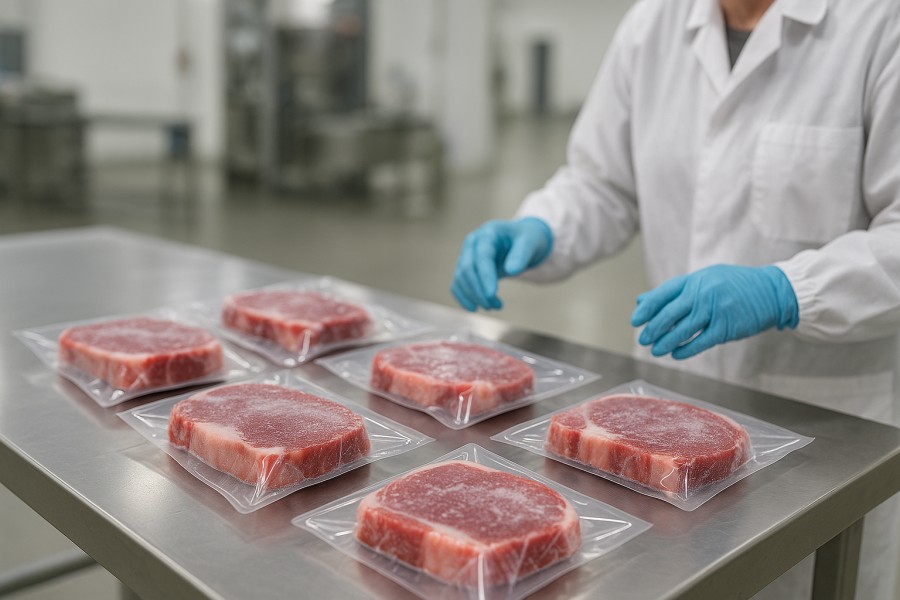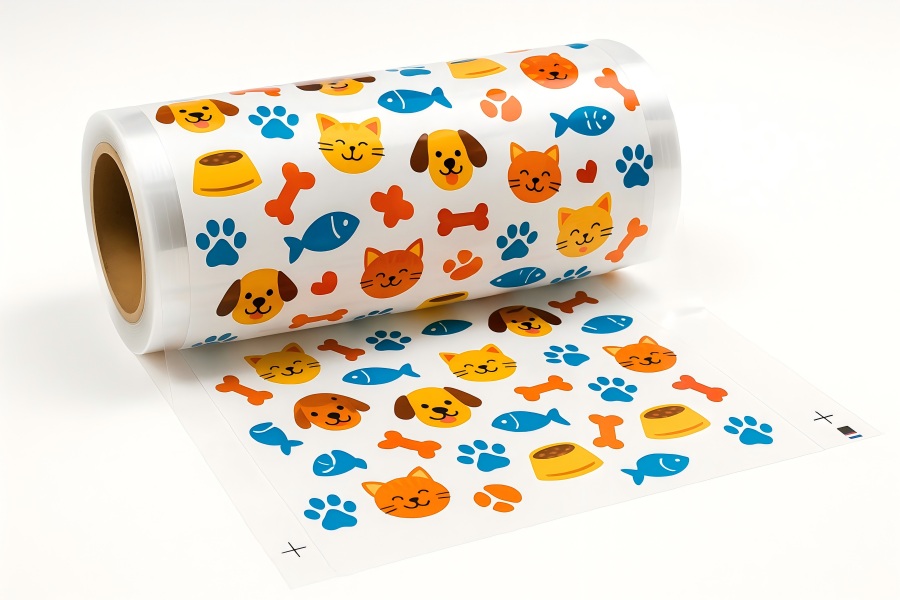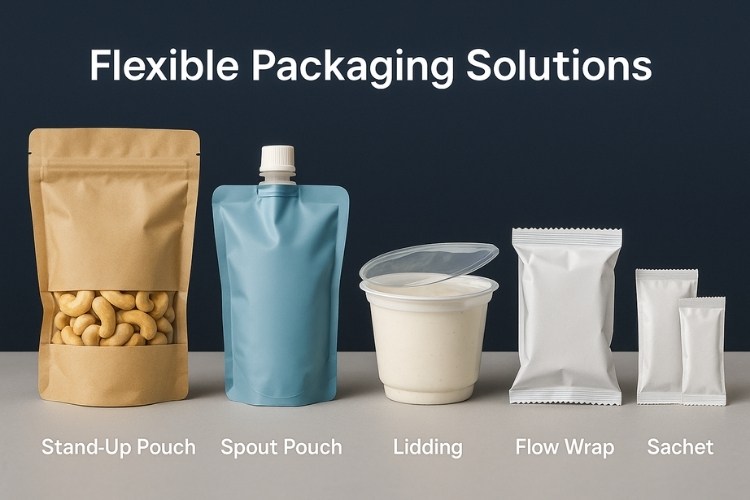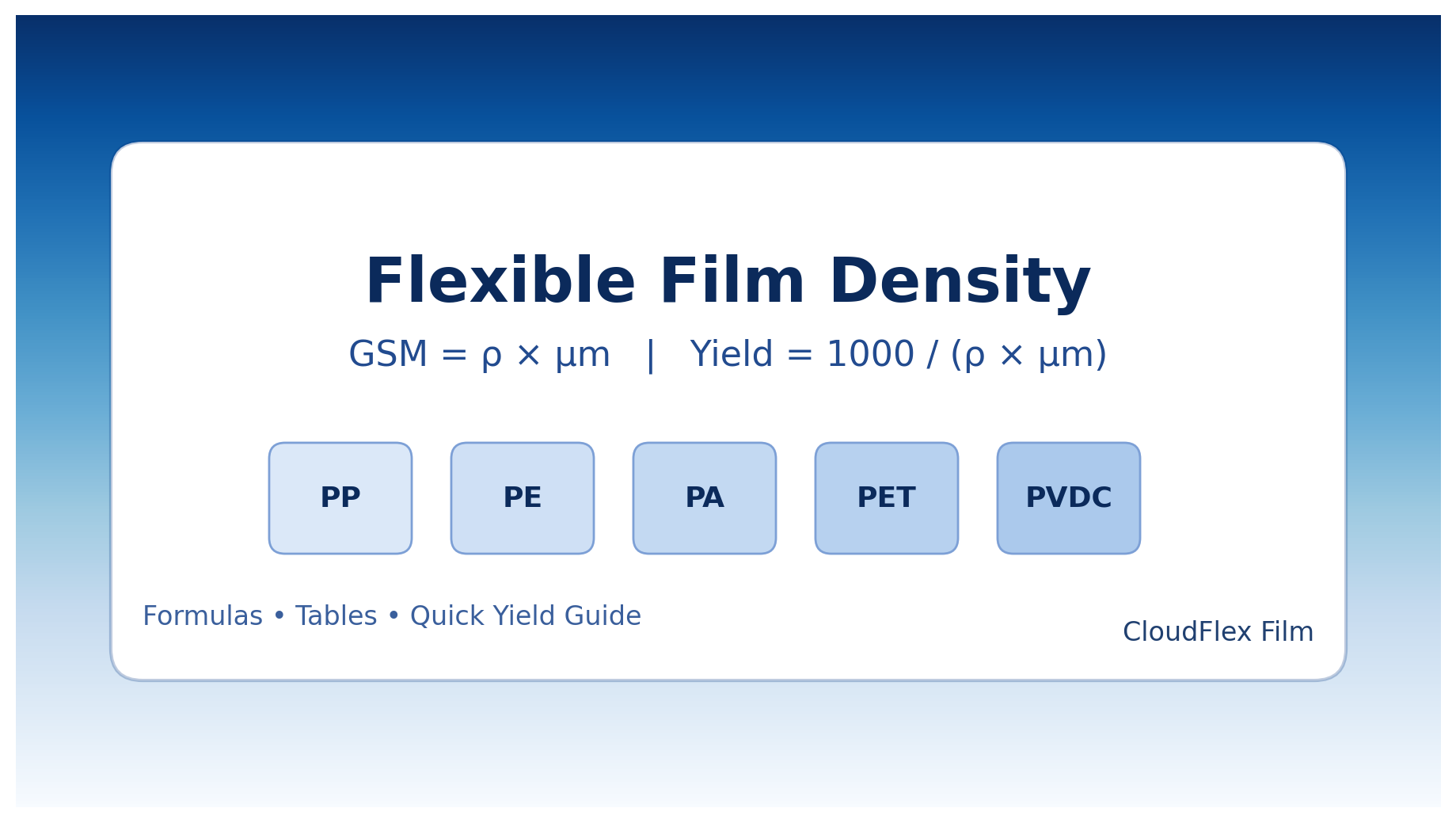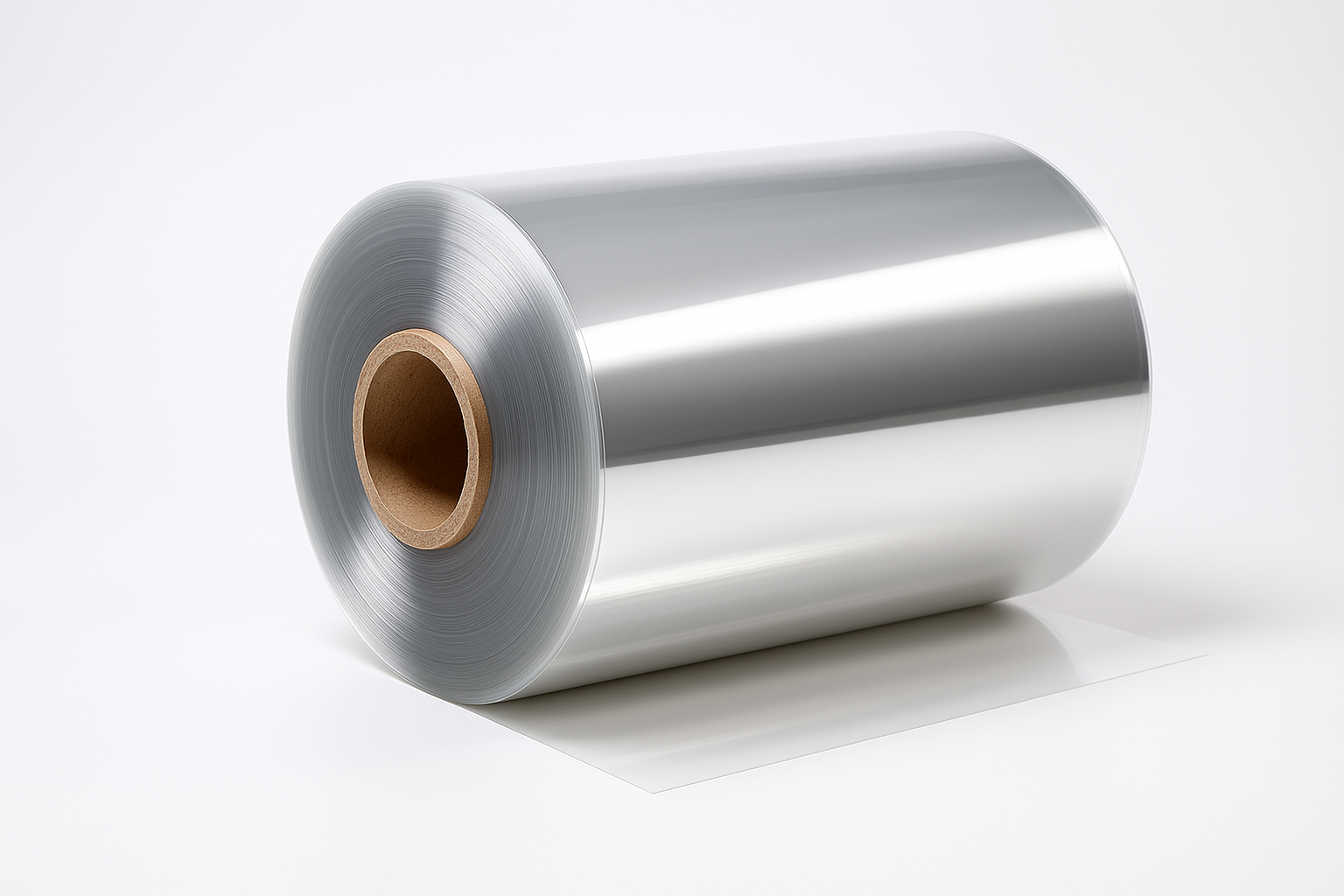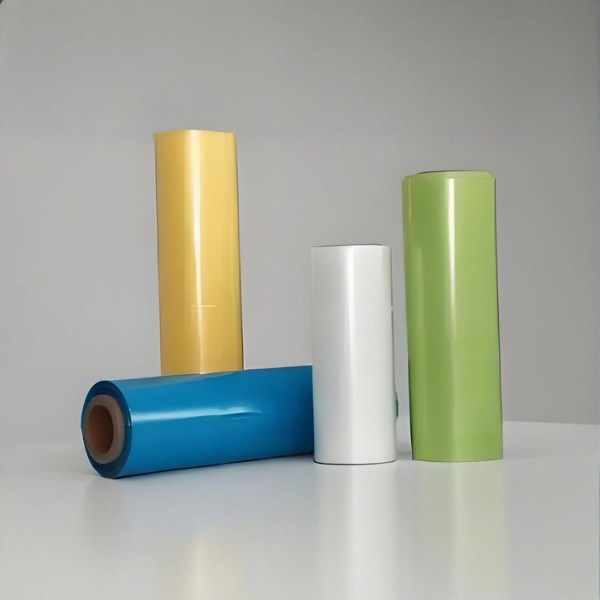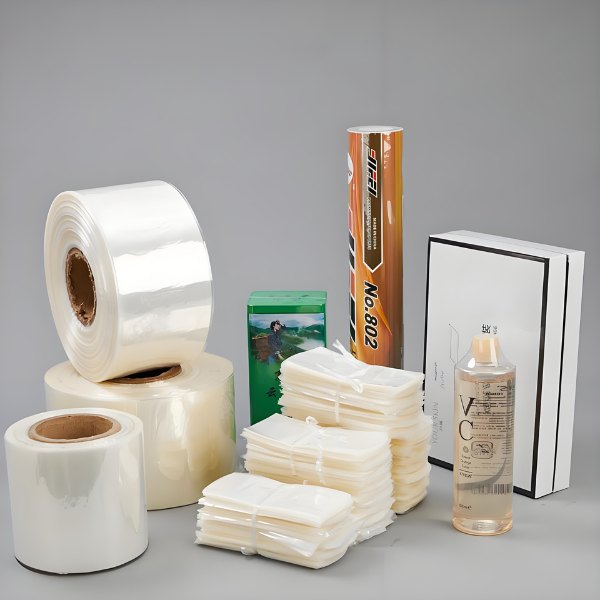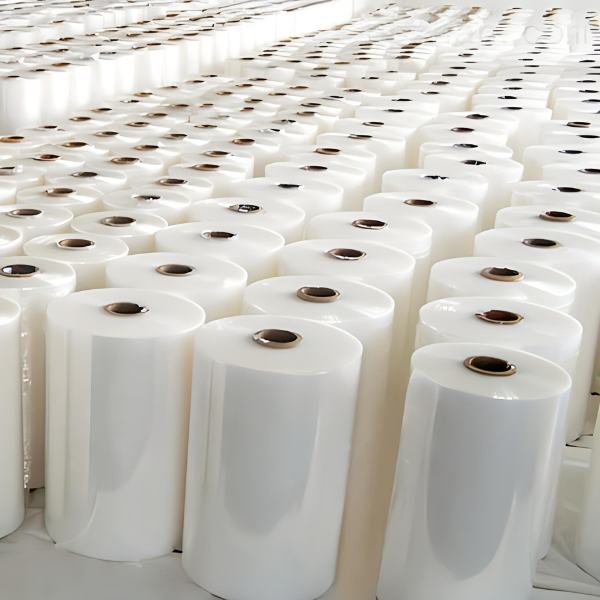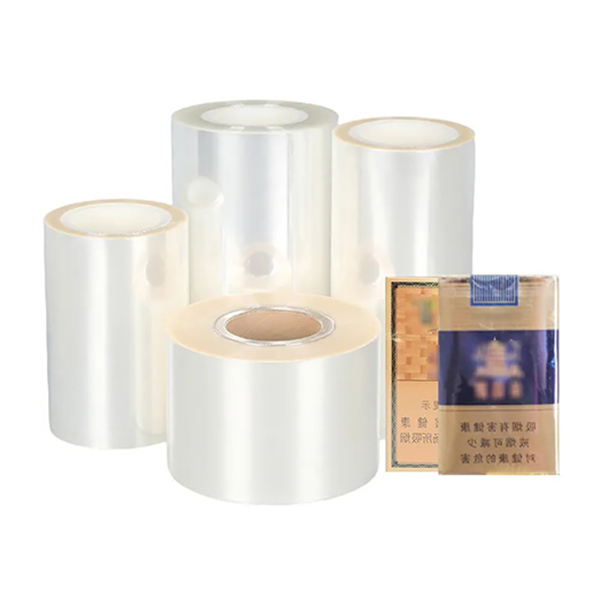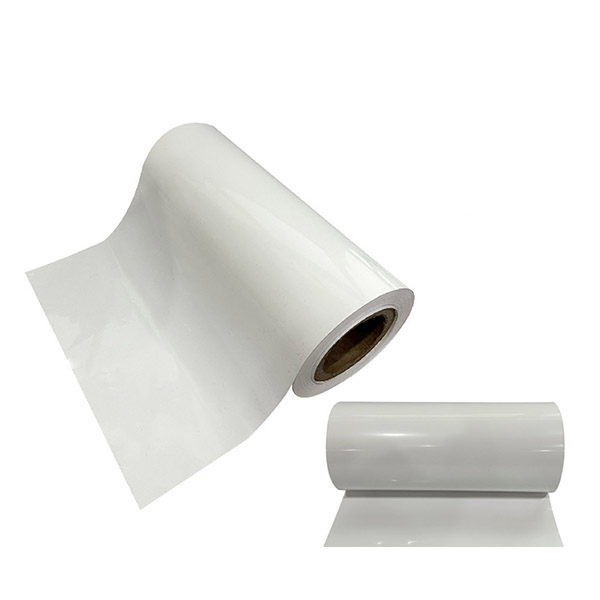Introduction — Hitting the Pain Points and Introducing the Topic
1.1 Opening: Painting a Common Scenario
Are you struggling to choose the right shrink film for your product packaging? Looking at the dazzling array of products on shelves—from bottled water and toys to pizza boxes—do you ever wonder if they all use the same type of shrink film?
As a purchasing manager, packaging engineer, or business owner, you know that packaging is more than just a product’s “outfit.” It’s a critical element for protecting the product, enhancing brand image, and even impacting production line efficiency. A wrong choice could lead to torn packaging, faded products, machine jams, or even legal risks due to non-compliance with environmental regulations.

{ Are You Struggling To Choose The Right Shrink Film For Your Product Packaging? }
1.2 Defining the Article’s Value
Don’t worry, this article is set to be your ultimate decision-making assistant. In the world of shrink films, POF (Polyolefin) and PVC (Polyvinyl Chloride) are the two most dominant materials. Each has its unique strengths and limitations.
This article will provide an in-depth yet easy-to-understand comparison of POF and PVC shrink films, covering everything from core performance and application scenarios to cost budgets and environmental regulations. Our goal is to empower you to make the most informed choice for your product with confidence after reading this guide.
1.3 A Preview of the Article’s Structure
Before we dive in, here’s a quick preview of what’s to come: We’ll start by introducing our two “protagonists,” POF and PVC. Then, we’ll engage them in a “head-to-head battle” across multiple dimensions, including performance, cost, safety, and environmental impact.
Next, we’ll provide clear guidance on when you should choose POF and in which situations PVC might still be a viable option. Finally, we’ll wrap up with our professional recommendations, incorporating current industry trends. Ready? Let’s get started!
Meet the Contenders — Getting to Know POF and PVC
2.1 What is POF Shrink Film?
POF stands for Polyolefin, a polymer material typically made from the copolymerization of monomers like ethylene and propylene. You can think of it as an “all-rounder.” Its most notable characteristics are its eco-friendliness, safety, high clarity, and high toughness. POF film is soft and flexible, resistant to becoming brittle even in low temperatures.
It produces minimal odor during shrinking and contains no harmful plasticizers (like phthalates) or heavy metals. These properties make it the ideal choice for packaging food, pharmaceuticals, cosmetics, and other high-end consumer goods.
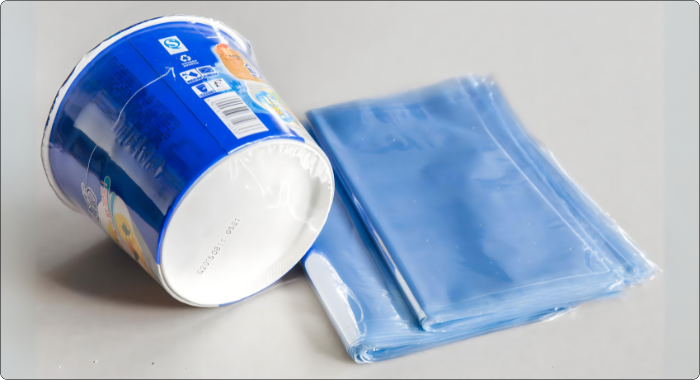
{ POF Shrink Film Are Eco-Friendliness, Safety, High Clarity, And High Toughness }
2.2 What is PVC Shrink Film?
PVC stands for Polyvinyl Chloride, the world’s third-most widely produced general-purpose plastic, making it a “veteran player” in the shrink film industry. PVC film is renowned for its strong shrink force, high gloss, and relatively low cost. However, its significant drawbacks are equally prominent: To increase its flexibility, plasticizers must be added during manufacturing, some of which are proven to pose potential health risks.
Furthermore, PVC can release toxic substances like dioxins when recycled or incinerated, creating a significant environmental burden. Consequently, its use is facing increasing restrictions.
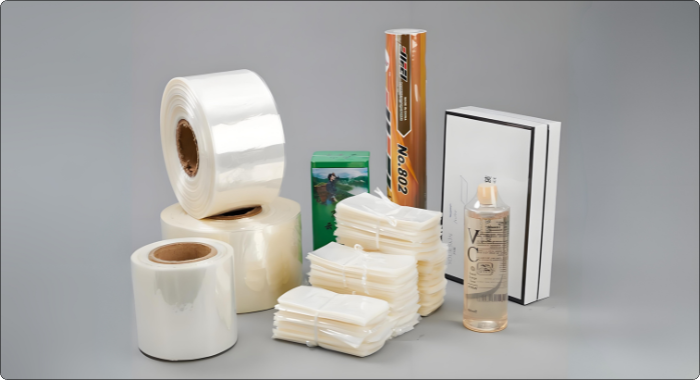
{ PVC Shrink Film Are Strong Shrink Force, High Gloss, And Relatively Low Cost }
Head-to-Head Battle — A Comprehensive Comparison of POF and PVC
To give you a more intuitive view of the differences, let’s lay out this showdown in a table:
| Comparison Dimension | POF Shrink Film | PVC Shrink Film |
|---|---|---|
| Safety | High. Non-toxic and odorless, complies with food contact standards like FDA, EU. | Low. Contains plasticizers that may leach, non-compliant with many food/pharma packaging standards. |
| Eco-Friendliness | High. Recyclable, produces only water and CO2 when incinerated, no toxic gases. | Low. Difficult to recycle, releases toxic gases like dioxins when incinerated, restricted in many countries. |
| Physical Properties | High toughness, puncture-resistant. Less prone to tearing, remains flexible in cold. | Brittle, easy to tear. Becomes hard and cracks in low temperatures. |
| Shrink Performance | Moderate shrink rate (approx. 60-80%), shrinks evenly, less likely to distort products. | Strong shrink force (approx. 40-60%), but uneven shrinking can distort products. |
| Clarity & Gloss | High clarity, good gloss, showcases products clearly. | Very high gloss, has a “shiny” appearance, but slightly lower clarity than POF… |
| Sealing & Processing | Excellent. Seals at low temperatures, strong seal, produces minimal smoke and odor. | Fair. Requires higher sealing temperatures, produces irritating smoke and a scorched smell. |
| Operating Temperature | Wide range. Can shrink at lower temperatures, highly adaptable. | Narrow range. Requires higher and precise temperature control. |
| Cost | Higher. Raw material and processing costs are higher than PVC. | Lower. Price is one of its main advantages. |
Selection Guide — Which One Should I Actually Choose?
After reviewing the comparison, you might still feel a bit confused. Don’t worry, let’s break it down by scenario.
4.1 Five Scenarios Where POF Shrink Film is Strongly Recommended
- When packaging food, pharmaceuticals, or cosmetics: Safety is paramount. POF’s non-toxic, odorless nature fully complies with strict food safety regulations worldwide, giving you peace of mind.
- When packaging irregularly shaped or sharp-edged products: Such as multi-pack toys, tools, or gift boxes with sharp corners. POF’s superior puncture resistance and toughness effectively prevent packaging damage during transit.
- When pursuing a high-end brand image: POF’s high clarity and even shrinking effect perfectly showcase product details, giving the packaging a premium, refined feel that enhances brand value.
- When prioritizing the production environment and employee health: POF produces almost no harmful smoke or odor during sealing and shrinking, creating a cleaner and safer workshop environment.
- When you have export business or target eco-conscious markets: Amid the global trends of “de-plasticization” and “sustainable development,” using eco-friendly POF film helps you navigate the environmental regulations of your target markets and demonstrates your company’s social responsibility.
4.2 Two Scenarios Where PVC Shrink Film Might Still Be Considered
- When cost is the single most decisive factor: If your product has a very low added value, operates in a highly competitive market where every penny counts, and your product is not food- or pharmaceutical-related with no export needs, PVC’s low price might be appealing.
- When extremely strong shrink force is needed to secure heavy products: In some non-food industrial packaging applications, such as securing a heavy stack of cardboard or metal parts, PVC’s powerful shrink force can be useful. However, note that this often requires specialized equipment to control the shrinking process to prevent product distortion.
Please Note: Choosing PVC means you are making compromises on safety, environmental impact, and brand image. This is a decision that requires careful consideration.
Industry Trends and CloudFilm’s Professional Advice
5.1 Industry Trend: Green and Safe is the Future
The global packaging industry is undergoing a profound transformation. Consumers are increasingly concerned about a product’s “pedigree,” including whether its packaging is eco-friendly and safe. Regions and countries like the EU, the US, and China are implementing increasingly strict regulations to limit the use of materials like PVC in packaging.
Major retailers and brand owners, such as Walmart and Amazon, are also explicitly requiring or prioritizing eco-friendly materials like POF in their sustainable packaging policies. It is foreseeable that the replacement of PVC shrink film with POF shrink film is an irreversible trend.
5.2 CloudFilm’s Professional Recommendation
As a company dedicated to providing innovative and sustainable packaging solutions, CloudFilm’s recommendation is clear: In the vast majority of application scenarios, prioritize POF shrink film.
We understand that cost is a crucial factor in business decisions. However, we believe that choosing a packaging material should not be based solely on the upfront purchase cost, but rather on the Total Cost of Ownership (TCO). By using POF film, you can:
- Reduce Risk Costs: Avoid fines, returns, and brand reputation damage caused by non-compliant packaging.
- Lower Production Costs: Reduce the defect rate caused by packaging damage and improve production line efficiency.
- Enhance Brand Value: Win consumer trust and preference with safe, eco-friendly packaging, which is an investment in itself.
CloudFilm’s Promise: We offer a range of high-quality POF shrink film products, from ultra-thin films to high-strength specialty films, to meet your diverse packaging needs. We don’t just supply products; we provide professional technical support and customized solutions. Contact CloudFilm today for free samples and packaging consultation. Let’s dress your product in the safest and most beautiful “outfit” together!


